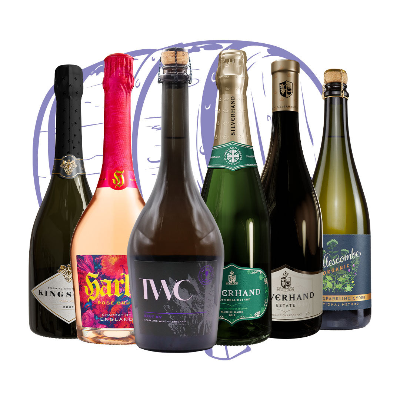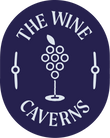Sparkling wine is one of the most popular wines all over the world. Its fizzy, bubbly vibes and taste make it unique as well as differentiate it from other wines.
The wine that has been fermented in a bottle to create carbon dioxide bubbles is known as sparkling wine. Due to the presence of these bubbles, the wine becomes effervescent and has a light, sparkling quality.
In this article, we will look at all of the methods for manufacturing sparkling wine.
Methods and the introduction to make sparkling wine
A variety of methods are used to make sparkling wine. However, just seven methods are well-known and widely used. There are seven of them:
- The Traditional Method
- The Ancestral Method
- The Transfer Method
- The Charmat Method
- The Continuous Method
- The Dioise Method
- and The Soda Method.
These are the major sparkling winemaking processes. Every major process has its own carbonation level and, as a consequence, produces a separate type of bubbly.
When compared to conventional winemaking, sparkling wines have a higher pressure, which also impacts the wine's taste.
When the pressure is increased, the bubbles become smaller and more precise. Some terms for sparkling wine bubble pressure:
- Beady: A wine bottle with less than 1 atm (atm - atmosphere) of added pressure (14.7 psi) (psi - pound per square inch). When the wine bottle is first opened, bubbles start forming on the bottle's sides.
- Semi-Sparkling: A slightly sparkling wine with 1–2.5 additional atm (14.7–36.7 psi) of pressure. Pétillant, Frizzante, Spritzig, and Pearl are examples of semi-sparkling wines.
- Sparkling: A wine with more than 3 atm (44.1 psi) of added pressure. Under the regulations of the EU, this is the only wine that may be marketed and sold under the sparkling wine category. Champagne, Crémant, Cava, Sekt, Espumoso, Mousseux, and Spumante are examples of sparkling wines.

7 different methods to make sparkling wine.
The purpose of all sparkling wine production methods is to effervesce the wine by adding enough carbon dioxide to it.
Here are those 7 methods to make sparkling wine:
The Traditional method:
This method is a classic method, also known as the Champagne method (méthode champenoise).
The bottle pressure needed for the traditional method is 73-103 psi or 5-7 atm. Traditional sparkling wines are expensive because of the complexity and duration of their production process. At first, a dry wine is produced by fermenting grapes that have been collected early to retain acidity.
The final sparkling wine blend, known as a “cuvée” in French, is created by the winemaker by combining the different base wines. Then the cuvée receives tirages (yeast, sugar, and nutrients) to begin the second fermentation before being put into bottles and covered with crown caps.
The wine goes through one fermentation in the barrel or tank, followed by a second fermentation with the presence of tirage in the bottle.
The second fermentation increases the alcohol content by around 1.3 percent, and it also produces CO2, which is contained within the bottle throughout the process.
When autolysis begins, the yeast dies and stays in the bottle. The quality of the wine improves with more time spent ageing on the lees.
Finally, these wines are prepared to be packaged and sold. Many winemakers retain their wines for at least 2-4 months following disgorgement to give them time to integrate and acclimate to being under cork. Examples of traditional sparkling wines include Champagne, Cava, Italian Metodo Classico wines, English sparkling wine, Crémant, some Sekt, and more.
The Ancestral Method:
The method used to make sparkling wine is the oldest. It is supposed that this method was first used in 1531.
Blanquette de Limoux is considered the world's first sparkling wine produced using an ancient process. The bottle pressure for the ancestral method is 2-4 atm (29-59 psi). There are several regional names for ancestral methods, particularly in France. The initial fermentation step in the ancestral method is nearly identical to that in the traditional method. The winemakers start by making a base wine and then proceed with the normal cuvée blending process.
The process of bottling then begins. In this process, the wine is bottled before the completion of the alcoholic fermentation. There are small differences from the traditional method. Normally, winemakers do not add tirage (yeast, nutrients, and sugar) in the ancestral process. As a result, the carbon dioxide and bubbles are produced entirely naturally, with no sugar or other additives. The ageing period for the Ancestral method is 1-3 years. Dosage usage is likewise forbidden during the second fermentation.
Examples of some wines produced by the ancestral method are Blanquette de Limoux, Loire, Bugey Cerdon, Jura, Pétillant-naturel etc.
Transfer method:
In the first fermentation process, the Transfer method completely adheres to the Traditional method.
Because the production of base wine, mixing cuvee, adding tirage, and bottling for the second fermentation all fall within the first phase of this process, just like the Traditional method.
In the bottle, the second fermentation occurs. Riddling and disgorging are prohibited in this method.
However, the Transfer method's transversage variation is the only one that employs riddling and disgorging.
To save the time and cost of disgorgement, the bottles are then emptied into a pressurized tank, filtered, and rebottled.
The bottle pressure is between 5-7 atm (73-103 psi) in the Transfer method. Dosages are applied before filtering.
The wine is now ready for sale after the corking and labelling steps. The sparkling wines produced using this method come in small format (187 ml) and larger format (3 L+) sizes.
Charmat Method:
The Charmat method is also known as the Tank method, the Metodo Italiano, and the cuve close. During the early 20th century's industrial revolution, the tank method was developed.
Prosecco and Lambrusco wines are mostly produced using this method. Federico Martinotti, an Italian, first devised and patented this technique in 1895.
And then Eugène Charmat, a French innovator, came up with a revised version in 1907.
The term “Charmat” is named after him. The traditional and ancestral methods are different from this one.
Instead of a bottle, a pressurised stainless steel tank is used for secondary fermentation.
The base wine and tirage (the sugar, yeast, and nutrients) are transferred to a tank after alcoholic fermentation (first) is complete.
Since the secondary fermentation takes place in a closed environment, CO2 dissolves in the wine instead of immediately fleeing into the air.
For the same reason, the bubbles created with this method are lighter and bigger.
The sediment is taken out when the second fermentation is finished, and the wine is then transferred to another tank with the dosage.
Since more time is spent fermenting wine, it results in finer and more durable bubbles, as well as improved preservation of flavour and taste.
Finally, the wine is filtered, packaged, and labelled. The cost of producing sparkling wine may be marginally reduced thanks to the Charmat method.


Continuous method:
The continuous method is also known as the Russian method. This method and the Charmat approach are somewhat identical.
The second fermentation is carried out in stainless steel tanks with special rings or wood chips.
The procedure's name comes from the fact that yeast is continuously added to pressurised tanks.
This allows the total pressure to be raised to 5 atm. After that, the wines are transferred to another tank that contains yeast enrichments, to which the dead yeast fragments cling and float in the wine.
This gives the wines an autolytic characteristic that is comparable to the Traditional method in taste.
After the yeasts and enrichments have settled out, the wines are transferred into the last set of pressure tanks, where they remain rather clear.
In this method, neither the addition of dosage nor the filtration step is required. The whole procedure lasts roughly a month.
Lancers wine is a prime example of this method.
Dioise method:
The production of sparkling wine using this method is common in the northern Rhône (France). For Clairette de Die AOC wine, this procedure is utilized.
The first fermentation takes up to four months, while the second takes close to six to twelve months. The production of yeast is regulated by freezing.
This procedure also forbids the use of dosage and extra carbon dioxide. Instead of riddling and disgorging, bottles are emptied, filtered, and rebottled.
Soda Method:
Additionally, known as the industrial method, the gas injection method, and the carbonation method. This method of making sparkling wine is easier and less expensive.
The key part of this method is using a carbonator to inject CO2 into the wine. In the carbonation method, a base and still wine is simply carbonated in a pressure tank.
This method produces big, unstable bubbles. NewAge is a cheaper wine that is produced employing the soda method.
For the wines, the bottle pressure is 3 atm (44 psi). The phrases “aerated sparkling wine” or “aerated semi-sparkling wine” must be used in the European Union to describe sparkling wines manufactured using this method.
Sparkling wine production is a chronic process. Here, winemakers require patience, awareness, and proper knowledge.
When making sparkling wine, a number of mistakes might happen. These mistakes are technically known as “wine faults,” which are unwanted characteristics of a wine that often come from bad winemaking practices.
In addition, manufacturers of sparkling wine are required to adhere to the guidelines set out by the government.















